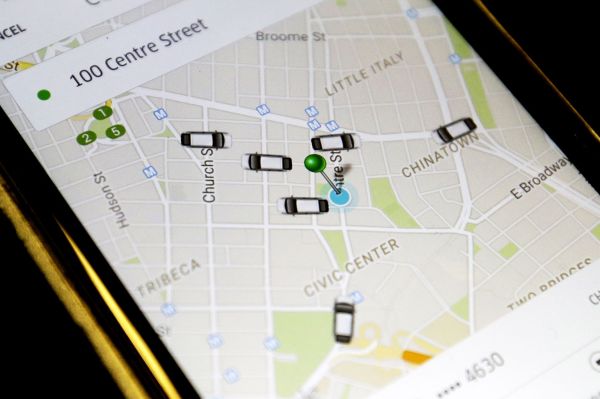Like any empire, Uber has been fighting battles on multiple fronts. In New York, that battle was against Mayor Bill de Blasio who sought to limit the number of new Uber drivers that could be added in the city. (Uber eventually won that fight.)
The reason for de Blasio’s intent to limit Uber? Traffic congestion.
But new data released by FiveThirtyEight suggests that, at least in terms of pickups (and not ride duration, route, etc.), Uber is simply replacing taxis in Manhattan’s most congested areas rather than adding to the number of pickups originating there.
According to the figures, which came from two separate Freedom of Information Act requests, the number of total pickups in New York City from the periods ranging April to June in 2014 went from approximately 48 million to 51 million. That’s a net increase of 3 million pickups by yellow taxis, green taxis (which are not allowed to pick up passengers in the majority of Manhattan) and Uber cars comprehensively.
However, in central and lower Manhattan (which is where traffic congestion is worst and de Blasio focused his efforts against Uber), Uber increased pickups year over year by 3.82 million, while taxis decreased pickups by around 3.83 million.
In other words, Uber did not add to the amount of pickups in Manhattan but rather replaced taxi pickups. Total number of pickups, both Uber and taxi alike, changed only by about 10,000, going from 39.37 million in 2014 compared to 39.36 million in 2015.
Though there a number of factors involved in traffic congestion beyond pickups (such as travel length, route, and time that fare-less drivers spend cruising), this data suggests that de Blasio’s assertion was unfounded. Uber has seemingly not been contributing a significant amount of extra traffic to an already-congested area of Manhattan.
In terms of the other boroughs and northern Manhattan (areas that could actually use more taxi availability), both Uber and taxis have increased the number of pickups from 2014 to 2015.
Long story short, Uber is growing alongside taxis in areas that have been historically underserved by car services, and almost one-to-one replacing yellow taxis in central and lower Manhattan.
Let the battle(s) rage on.
